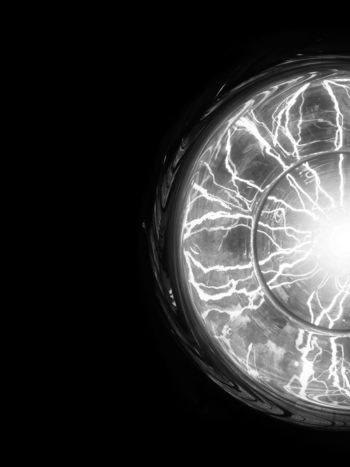Aggregation of Battery Energy Storage and Distributed Energy Resources
Battery energy storage systems (BESS) are increasingly installed in distribution grids in conjunction with other distributed energy resources (DER). These resources are photovoltaic (PV) systems and other distributed generation, including generation from renewable energy resources (RES), such as wind and small hydro. One of the roles of BESS, in support of the wide deployment of renewable energy resources, is to meet the requirement for energy balancing to mitigate resource variability and intermittency and make the combination of BESS and renewable DER dispatchable. This balancing feature is applicable to smaller, roof-top PV installations (behind the meter) connected to the low voltage (LV) grid and to larger PV or wind farms connected to medium voltage (MV) distribution feeders. In the latter case, the combined installation feeds energy directly into the distribution system.
Members
Convenor (GR)
N. HATZIARGYRIOU
Secretary (US)
J. REILLY
G. JOOS (CA), B. BUCHHOLZ (DE), S. SKARVELIS-KAZAKOS (GB), K. YAMASHITA (US), J. SUSANTO (AU), G. SARIDAKI (GR), T. OFFERGELD (DE), F. SOSSAN (FR), Υ. KENARANGUI (US), M. VALLIOU (GR), S. VERMA (JP), H. EVANS (GB), I. NDIAYE (US), A. BLAVETTE (FR), A. OULIS ROUSIS (GB), L. FAN (US), C. SCHWAEGERL (DE), H. WANG (AU), S. BRODERICK (GB)
Scope
BESS are key enablers for the implementation of active distribution system functions and for providing a range of grid services at the distribution level. Grid services include voltage support, feeder power flow control, load and hosting capacity management, local energy and capacity provision, and reliability and resilience services in the event of contingencies and exceptional weather events. In this technical brochure (TB), it is assumed that these services are provided to the MV and LV distribution system. However, they can also be provided to support the operation of the transmission grid.
BESS can be embedded in distribution systems in smaller units deployed in large numbers at low voltage levels in conjunction with PV systems, for example. In the case of wide deployment of a large number of distributed BESS and PV systems, these need to be aggregated and controlled using DER management systems (DERMS) to fully exploit their potential to provide grid support and services.
The TB is targeted towards distribution system operators and BESS project developers. It addresses issues associated with BESS deployment, configuration, design and management in the context of high penetration of renewable energy resources (RES) in distribution systems, including PV systems. The brochure includes information and discussions of BESS design and deployment, interconnection and integration requirements and aggregation of BESS with existing DER. It addresses economic and business case considerations. Life cycle considerations are discussed in relation to the different types of applications and BESS design. Findings of previous working groups on BESS and related issues in distribution systems have been included as appropriate.
Description of the TB
The Technical Brochure is composed of five chapters and three appendices. Chapter 1 introduces an overview of battery services to MV and LV networks, BESS aggregation, technologies and electricity markets. Chapter 2 describes the grid support services required for a wide deployment of DER, and provides a characterization of the services enabled by BESS and their inverter interfaces. Chapter 3 deals with aggregation approaches for the provision of grid services from a large number of distributed BESS. Chapter 4 presents BESS operating constraints in terms of battery technology, weight, maintenance, and coordination with other controllers. The impact of battery operation on the battery life cycle is also discussed. Chapter 5 deals with regulatory and legal frameworks including technical considerations for BESS grid service delivery, regulatory and market considerations, market participation, regulatory issues for aggregators and regulatory impacts on BESS management and operation. The appendices provide information on frequency support (for island systems), BESS aggregation approaches and aggregated BESS deployment examples and projects.
BESS for provision of grid services at MV and LV networks

Figure 1 - Main stakeholders, use cases and capabilities of BESS in conjunction with RES at MV and LV distribution level
Figure depicts how DER, including BESS, are deployed and how services are provided to the grid and other systems in the grid. This diagram is used to present entities, use cases (marked in turquoise colour) and capabilities (marked in green) of BESS in conjunction with the renewable energy resources (RES) installations. Transmission system operators (TSOs) and energy market operators are considered out of scope of this TB.

